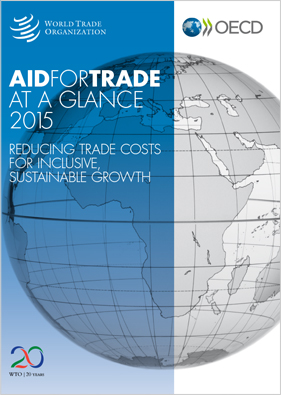Aid for Trade at a Glance 2015: Reducing Trade Costs for Inclusive, Sustainable Growth
Опубликованы данные о десятилетней работе ОЭСР в рамках данной инициативы.
Since the Aid for Trade Initiative was established ten years ago, the global economy has changed dramatically. On 30 June the biennial Global Review determined that the initiative has worked as expected and is broadly considered a success. In particular:
- The initiative has succeeded in raising awareness about the positive role that trade can play in promoting economic growth and development.
- Partner countries are getting better at articulating, mainstreaming and communicating their trade-related objectives and strategies.
- Since the Initiative was launched in 2006, a total of USD 246.5 billion in ODA and USD 190.7 billion in trade-related other official flows has been disbursed to finance aid-for-trade programmes and projects. In 2013, ODA commitments for trade-related programmes stood at USD 55 billion with an additional USD 49 billion in other official flows.

There is now ample empirical evidence that the aid for trade initiative is broadly correlated with increases in trade. Aid for Trade at a Glance 2013 found that 1 USD invested in aid for trade is on average associated with an increase of nearly 8 USD in exports from all developing countries, with the increase averaging at 20 USD for the poorest countries.
The empirical evidence is buttressed by anecdotal experience gathered through a large
number of case stories submitted through monitoring exercises. The sheer quantity of activities reported by the public and private sector suggest that aid-for-trade efforts are substantial, that they have taken root across a wide spectrum of countries, and that they are becoming central to development strategies.
 |
| DACnews_july2015_aftcover.jpg |
Despite these achievements, adapting to the 2015 development agenda and the Sustainable Development Goals (SDGs) poses challenges.
The founding premise of the Aid for Trade Initiative was that enshrining market access in trade agreements is essential, but not sufficient to achieve market presence. The 2015 report underlines that that high trade costs remain a significant impediment for developing countries; prohibitive trade costs can price the poorest countries out of global market altogether. And while trade costs alone do not alone explain the development pathways of economies, they are a major obstacle to some countries’ ability to grow and diversify.
A better understanding of how high trade costs undermine connectivity and hamper economic growth and development will be essential for realising the full potential of aid for trade in contributing to post-2015 development policy. Well-designed aid-for-trade interventions can reduce trade costs in areas that partner countries and donors prioritise, such as infrastructure, trade facilitation, and non-tariff measures like product standards. Furthermore, this need not contradict with overarching green growth objectives; on the contrary aid for trade can actually promote these objectives.
There are positive reasons to believe that developing countries and their partners are taking a serious look at trade costs and are taking action that builds on solid practical and theoretical foundations.
Дата
13 июля
2015
Рубрики
В статье упомянуты
